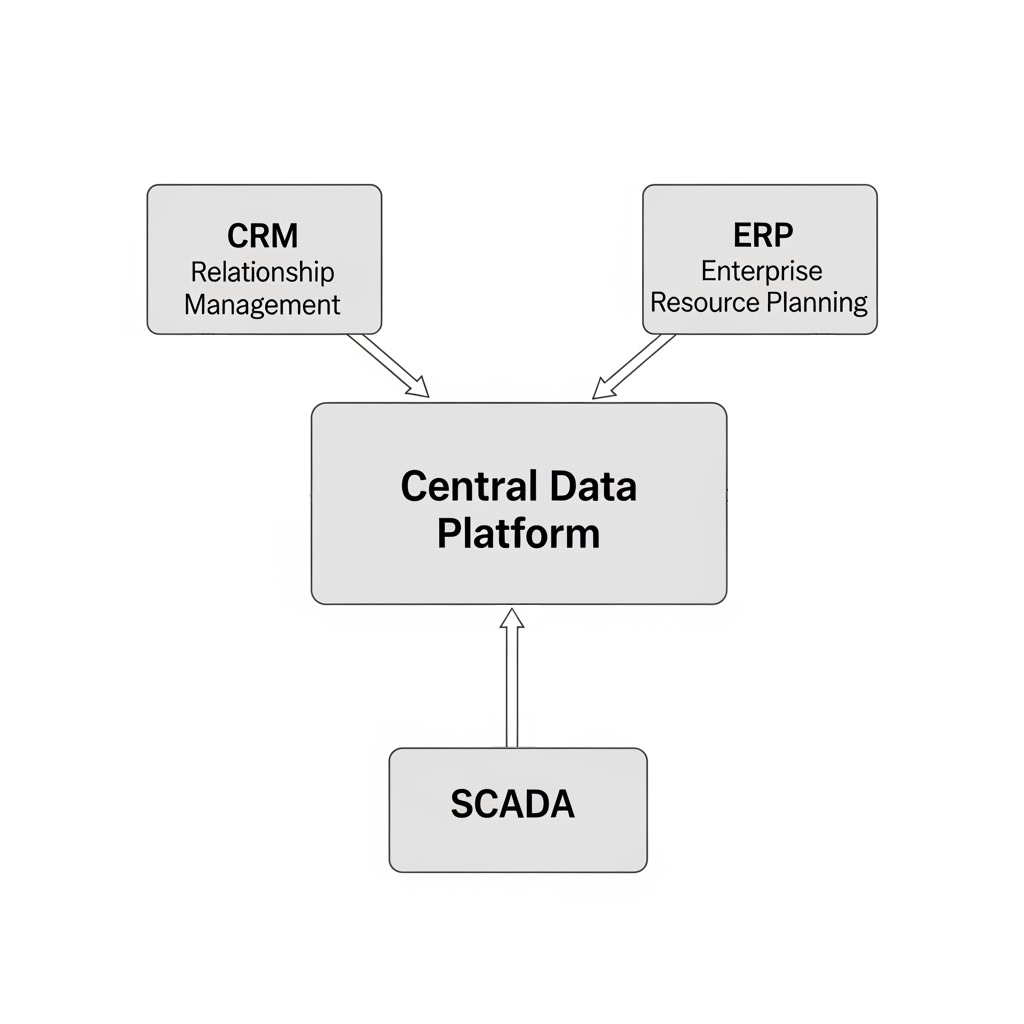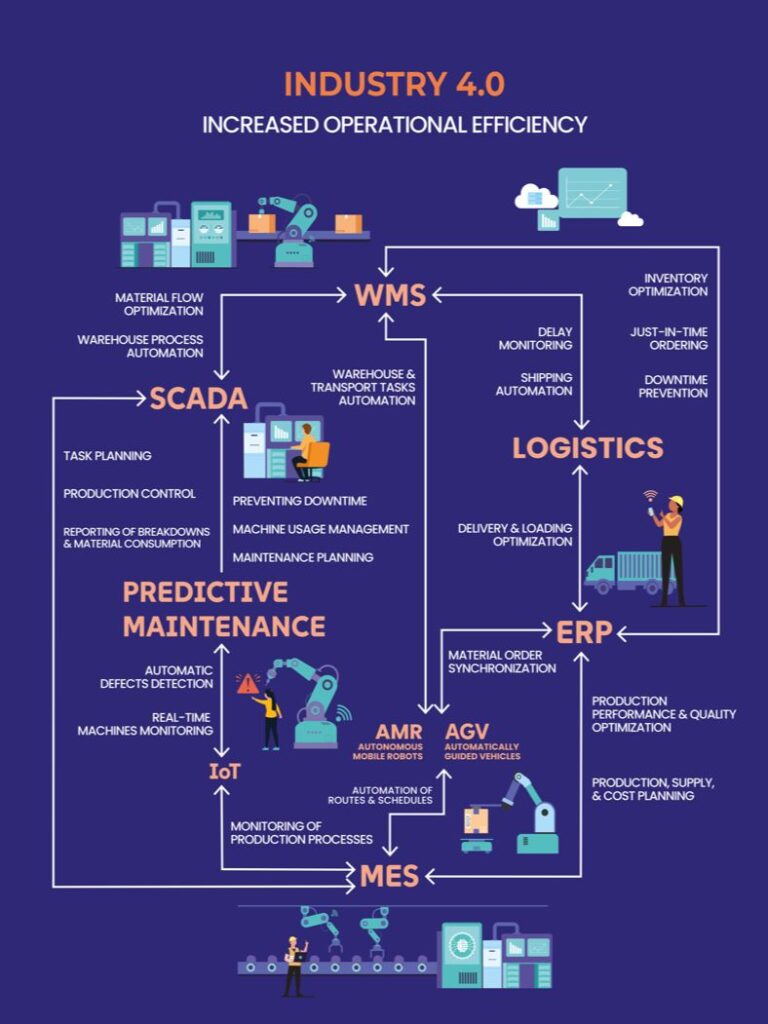Lack of system integration is a direct path to errors and delays
In the industrial sector, every company relies on multiple tools: systems for order management, project oversight, sales, and installation monitoring. The problem arises when these systems do not work together – data becomes fragmented, and processes require manual handling. The absence of a centralized database system and heavy reliance on manual procedures lead to costly errors and delays.
The high cost of disconnected systems. Common challenges
Every department has different data
Project information, orders, installation statuses, and technical reports are not updated in a single location.
Rewriting instead of working
Employees frequently have to switch between multiple applications, manually input data, which extends work time and increases the risk of errors.
Project management chaos
Discrepancies between order and execution statuses lead to poor decisions and higher costs.
Why are your projects stuck?
When orders, statuses, and reports are scattered across different systems – every department ends up with its own version of the truth. And that’s when discrepancies appear: a project marked as “in progress” but missing components; an installation scheduled in the plan but blocked in logistics. That’s exactly where errors and delays come from.
Extended execution times
Insufficient automation and lack of process integration lead to delays in orders and project delivery. Ineffective order and component logistics management further prolong execution and increase costs.
Business scalability issue
As a company grows, so does the number of projects, partners, and suppliers. An integrated system or B2B platform makes it possible to manage this growing volume of transactions and installations efficiently, without errors or downtime.
Declining customer satisfaction
Timely deliveries, transparent project execution, and accurate installation status data have a huge impact on customer satisfaction. Mistakes in deliveries and project delays can have long-term consequences for a company’s reputation.
The ultimate solution: Centralized data integration
What is data integration? Software solutions that connect all processes into a single system. There are many ways to integrate – from simple to advanced. But for a manager, the most important question is different: will all the key data (orders, statuses, reports) be visible in one place and in real time. Technologies are tools, not goals in themselves.

Data centralization
All information about projects, orders, components, installations, and statuses is accessible within a single system, enabling easy management and real-time updates.
Process automation benefits
Automating project management, documentation, and communication with partners and suppliers reduces errors and operational costs, shortens work time, and speeds up project execution.
Real-time monitoring and reporting
With advanced dashboards, access to data on project statuses, installations, deliveries, and payments is fast and transparent, allowing you to react instantly to changes.
These are just a few examples of the systems we can integrate for you.
Who benefits most from system integration
✅ Scale efficiently – an integrated system is ready to handle more projects, orders, and partners, supporting rapid growth in the RES industry.
✅ Gain a competitive edge – an efficient project management system and ERP/CRM integration are key to faster growth and maintaining a leading position in the RES market.
✅ Save time and costs – process automation and eliminating errors related to manual data entry translate into real operational savings.
✅ Improve customer satisfaction – effective project management, accurate installation status data, and seamless communication enhance relationships with partners and clients.
Your first step: how to plan your integration strategy
Take the first step – map your processes and identify where the company loses the most time. This way, you’ll avoid costly “blind” decisions and build a system that grows with your business.
You can do this on your own – a simple checklist-style process map is enough to reveal bottlenecks. If you want to speed things up, we can guide you through this stage in a short consultation.

If you already have a clear vision, we’ll help you precisely plan the next steps, avoiding unnecessary costs. After a detailed analysis, we also offer workshops to create an action plan fully tailored to your needs and goals.
Even if you haven’t made the final investment decision yet, you’ve already taken a major step forward. You now have knowledge and a clear action plan. From our experience, this leads to a much more customized and effective solution.
At this stage, we’ll also provide all the necessary materials for you to review with your team. This will save you time, prevent mistakes, and help you make better business decisions.
You can start independently — or with our support. The most important thing is to take the first step.





